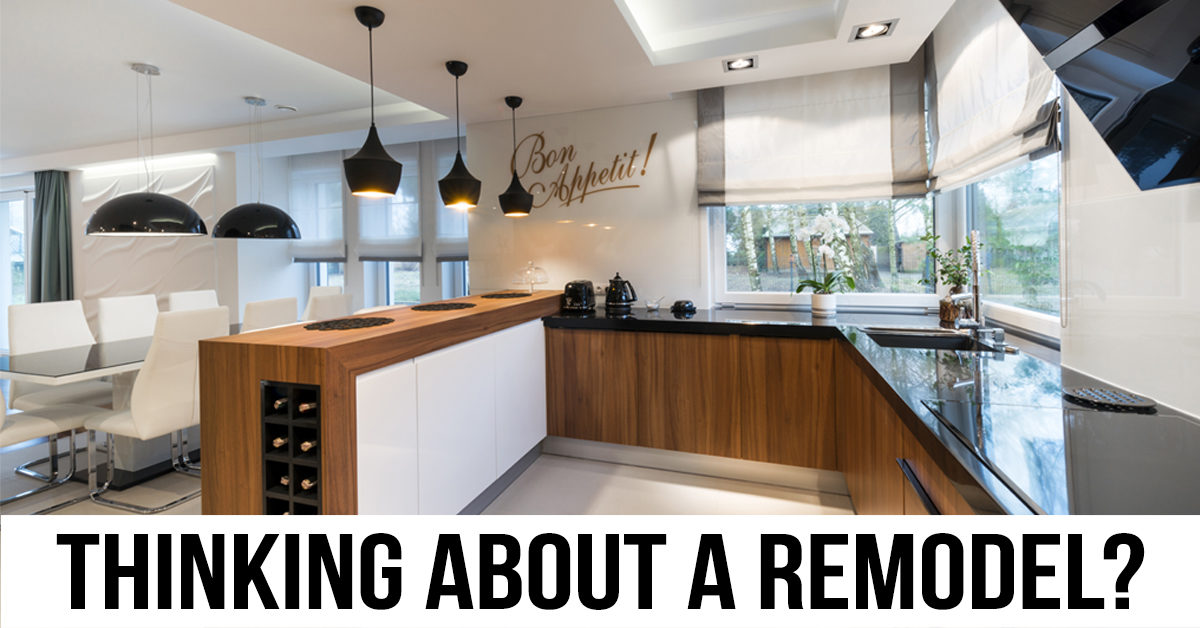Remodeling? Refinancing With a 203(k) Loan Can Help

When your house is in need of some serious TLC, it can be tough finding room in your budget for renovations and repairs. One way to pay for those projects is by refinancing your home with a Federal Housing Administration-backed 203(k) loan.
The FHA provides mortgage insurance on loans originated by lenders, backing them financially in case borrowers default or don’t follow the loan terms. Anyone can obtain an FHA loan — first-time buyers, repeat buyers or current homeowners looking to refinance.
With an FHA 203(k) loan, you can roll the cost of home improvement projects into a single monthly mortgage payment by refinancing with one of two options: the limited 203(k) insured loan or the standard 203(k) insured loan.
Unlike using a credit card or taking out a personal loan, which have higher interest rates and shorter repayment terms, refinancing with a 203(k) loan can potentially lower your current mortgage rate while creating more wiggle room for you with a longer repayment period.
How they work
Here’s a quick breakdown of the Limited 203(k) insured loan and the standard 203(k) insured loan:
Limited 203(k)
- Provides up to $35,000 with no minimum cost requirement.
- Covers more aesthetic, uncomplicated repairs or upgrades (new countertops, bathroom remodel, new flooring).
- Allows flexibility for borrowers to choose different contractors for different projects.
- Requires project completion within 60 days of the loan’s closing date.
- No inspections are required for projects totaling less than $15,000.
Standard 203(k)
- Covers structural improvements only (room additions, replacing faulty plumbing or electrical systems, etc.).
- Has no price cap, but projects must total $5,000 or more to be eligible.
- Requires project completion within six months of closing.
- Limits work to a single general contractor, who must hire and pay subcontractors.
- Requires inspections on all work regardless of cost.
Nerd note: The FHA has set mortgage limits for borrowers based on median sale prices for a given area. Check out the FHA’s Mortgage Limit Calculator to determine the maximum amount you might qualify for in your area.
Is a 203(k) loan right for you?
Before you talk to a lender, it’s smart to get your remodeling ducks in a row and get quotes from contractors on how much your projects will cost. You want to keep things on track and within the time limits of your 203(k) loan. Keep in mind that most contractors book out a few weeks (or more) in advance, and a 203(k) loan could take longer to close than the typical 30 to 45 days for most conventional loans.
Some people have the misconception that the FHA sells mortgages or sets interest rates, but it doesn’t. The FHA insures loans and sets some basic qualification rules, but individual lenders typically have their own set of criteria for qualifying potential borrowers, says Nancy West, housing program officer with the U.S. Department of Housing and Urban Development’s Homeownership Center in Santa Ana, California. Only FHA-approved lenders can offer these types of loans, so if you’re interested be sure to seek out an approved lender.
You can finance up to 96.5% percent of your mortgage with an FHA loan as long as you have a credit score of 580 or more. With mortgage rates still low, rolling the cost of a major remodeling project into your loan might work out better than other financing options, which often come with higher interest rates and shorter repayment terms.
One downside to FHA-insured loans is the monthly insurance premium requirement, which must be paid for a minimum of 11 years or over the life of the loan. There’s also an additional funding fee and a lot of paperwork involved.
That said, a 203(k) loan lets you write off a portion of the mortgage interest on your taxes — something you can’t do with a personal loan, West says.
The bottom line
Home improvement costs can add up fast. For example, remodeling an existing bathroom costs an average of $16,724, and a new roof can put you back nearly $20,000, according to Remodeling magazine’s 2015 Cost vs. Value Report.
The 203(k) program takes some of the stress out of the equation by giving you more flexibility to pay for improvements and refinance your mortgage with an all-in-one solution.
Shop around for different mortgage rates from an FHA-approved lender and read up on the two types of 203(k) loans to determine which kind best fits your needs.
This article originally appeared on NerdWallet.


